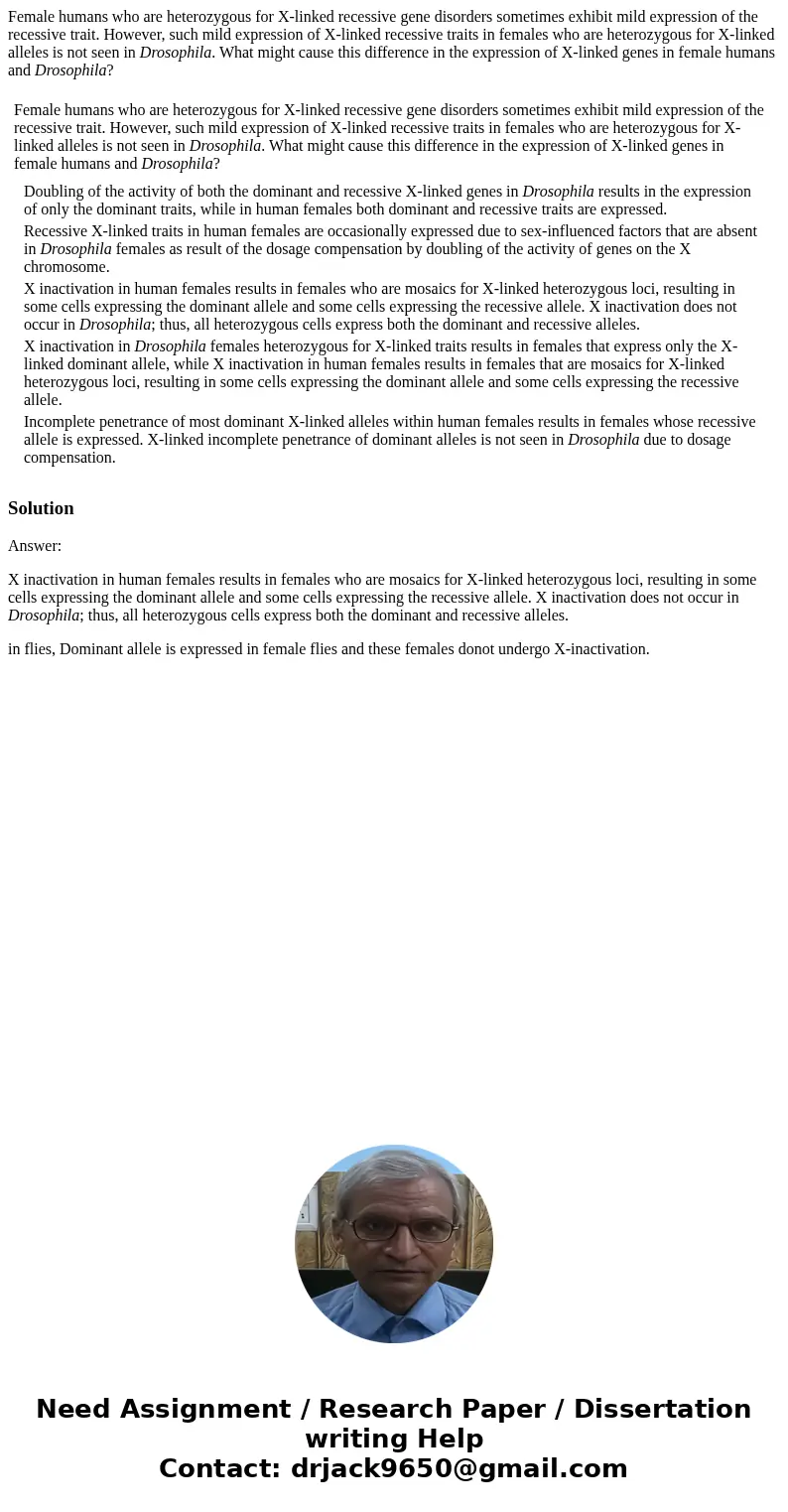Female humans who are heterozygous for X-linked recessive gene disorders sometimes exhibit mild expression of the recessive trait. However, such mild expression of X-linked recessive traits in females who are heterozygous for X-linked alleles is not seen in Drosophila. What might cause this difference in the expression of X-linked genes in female humans and Drosophila?
| Female humans who are heterozygous for X-linked recessive gene disorders sometimes exhibit mild expression of the recessive trait. However, such mild expression of X-linked recessive traits in females who are heterozygous for X-linked alleles is not seen in Drosophila. What might cause this difference in the expression of X-linked genes in female humans and Drosophila? | | Doubling of the activity of both the dominant and recessive X-linked genes in Drosophila results in the expression of only the dominant traits, while in human females both dominant and recessive traits are expressed. | | Recessive X-linked traits in human females are occasionally expressed due to sex-influenced factors that are absent in Drosophila females as result of the dosage compensation by doubling of the activity of genes on the X chromosome. | | X inactivation in human females results in females who are mosaics for X-linked heterozygous loci, resulting in some cells expressing the dominant allele and some cells expressing the recessive allele. X inactivation does not occur in Drosophila; thus, all heterozygous cells express both the dominant and recessive alleles. | | X inactivation in Drosophila females heterozygous for X-linked traits results in females that express only the X-linked dominant allele, while X inactivation in human females results in females that are mosaics for X-linked heterozygous loci, resulting in some cells expressing the dominant allele and some cells expressing the recessive allele. | | Incomplete penetrance of most dominant X-linked alleles within human females results in females whose recessive allele is expressed. X-linked incomplete penetrance of dominant alleles is not seen in Drosophila due to dosage compensation.
| | | | |
Answer:
X inactivation in human females results in females who are mosaics for X-linked heterozygous loci, resulting in some cells expressing the dominant allele and some cells expressing the recessive allele. X inactivation does not occur in Drosophila; thus, all heterozygous cells express both the dominant and recessive alleles.
in flies, Dominant allele is expressed in female flies and these females donot undergo X-inactivation.

 Homework Sourse
Homework Sourse